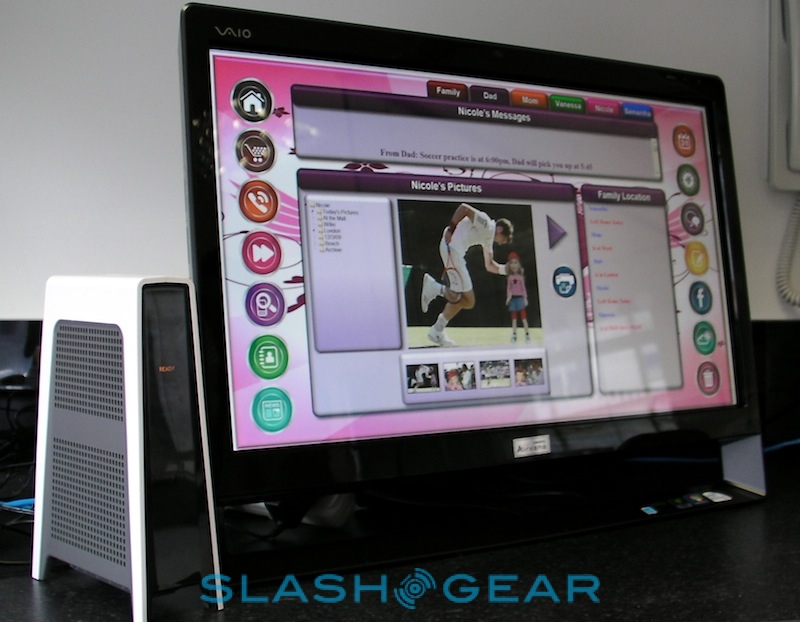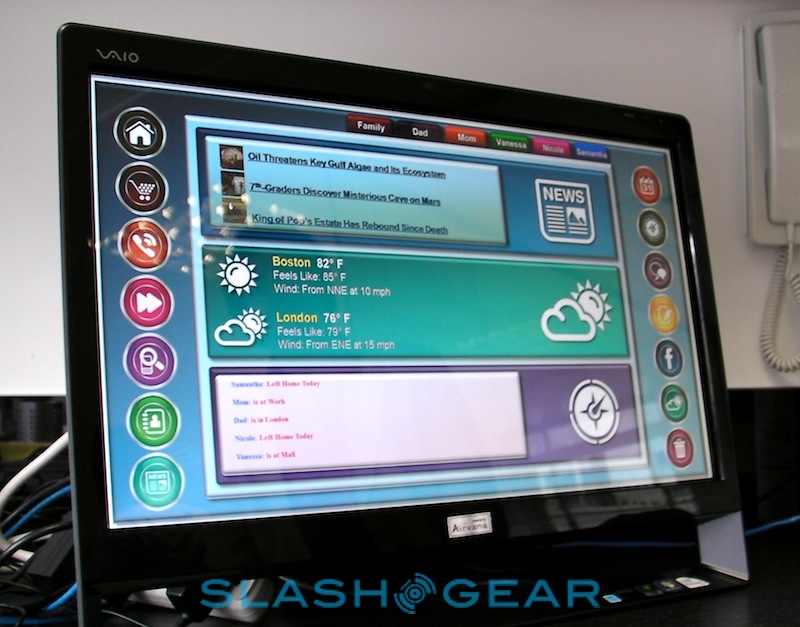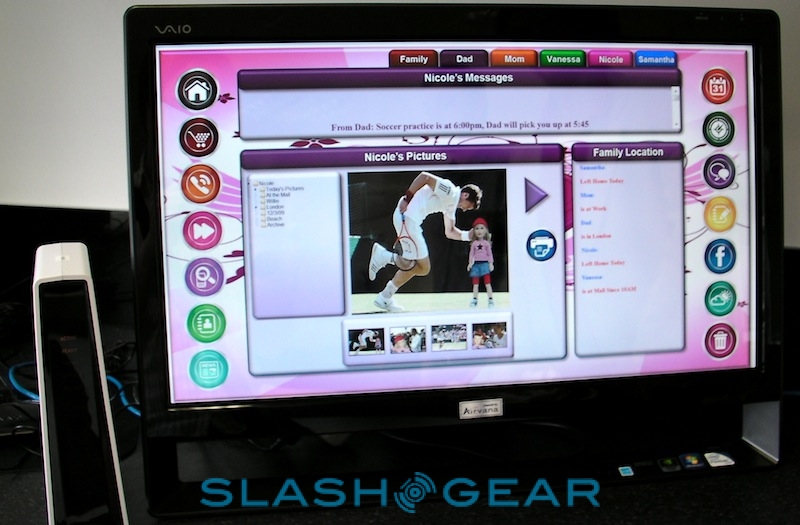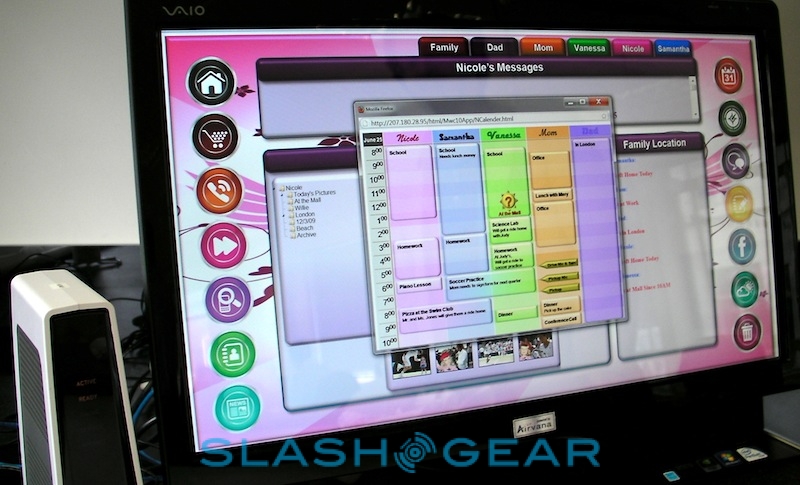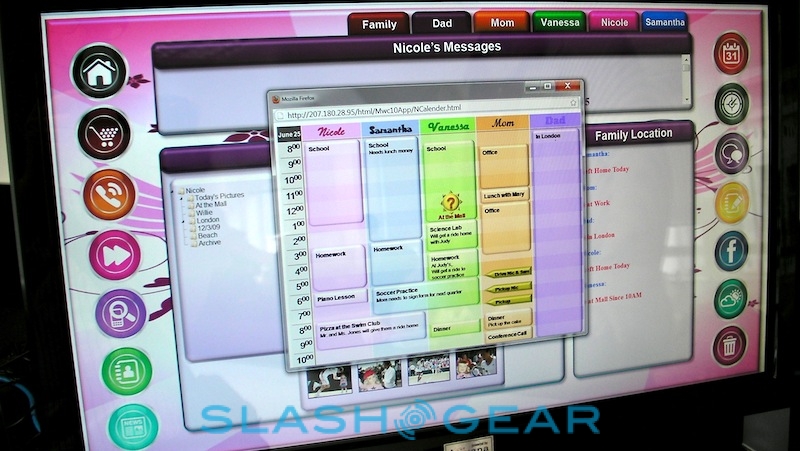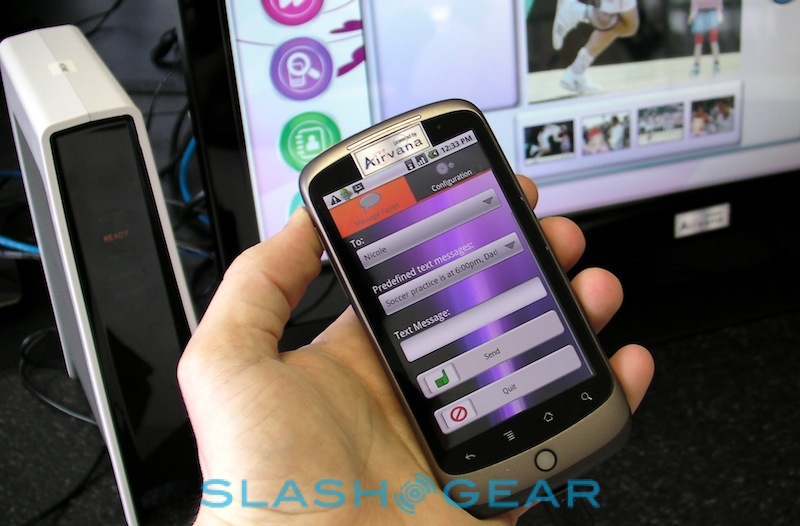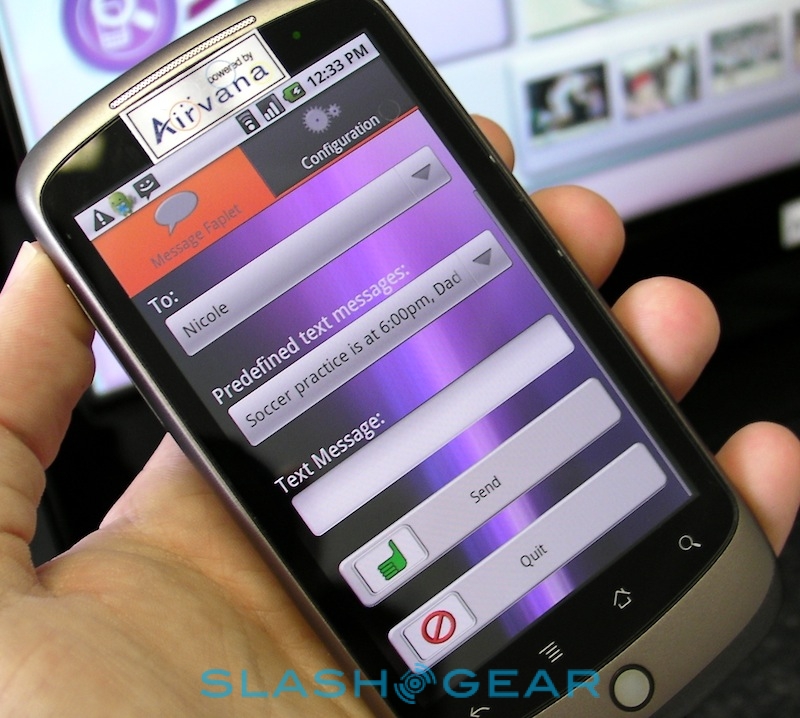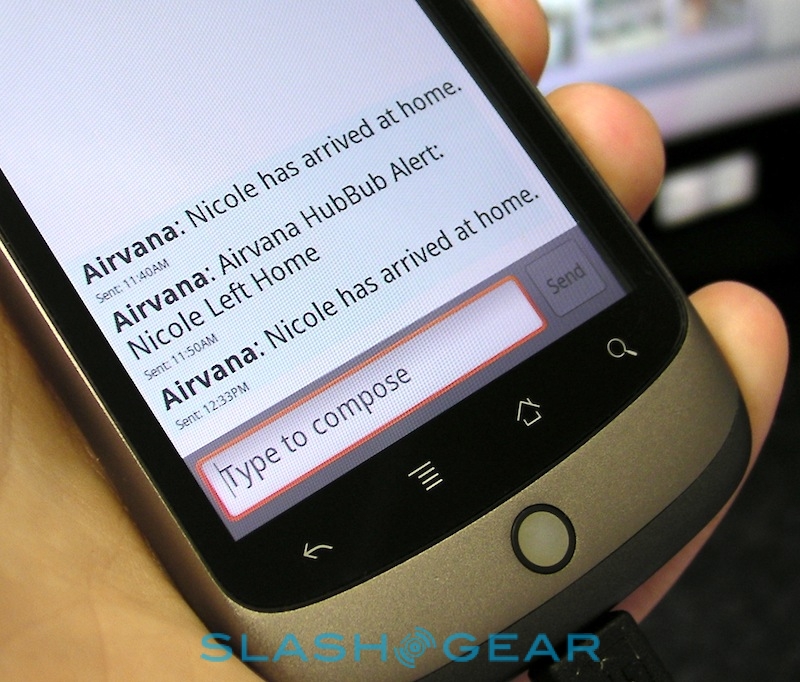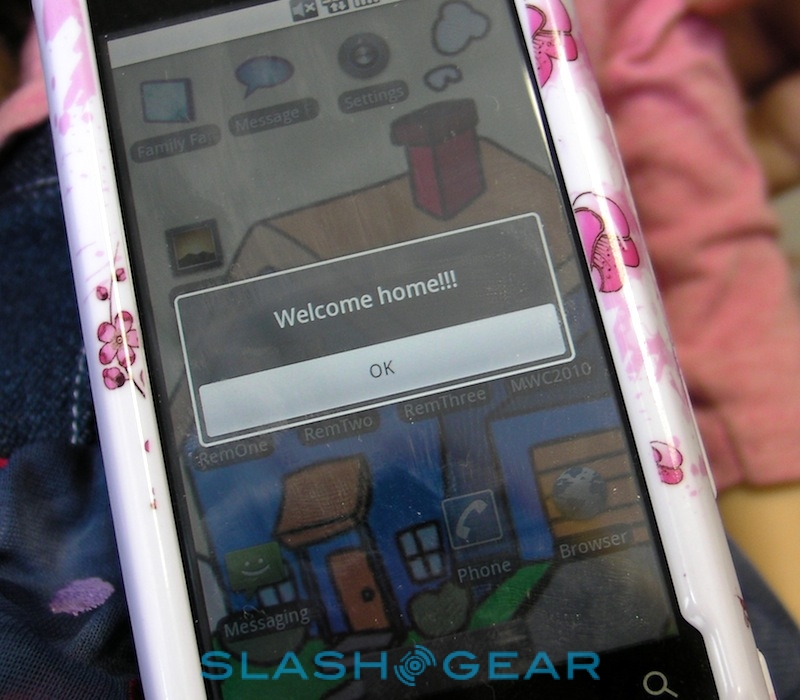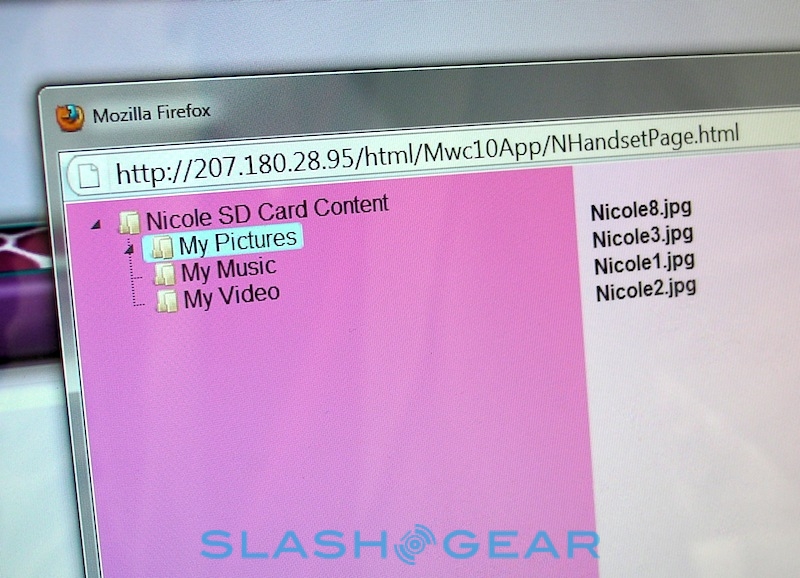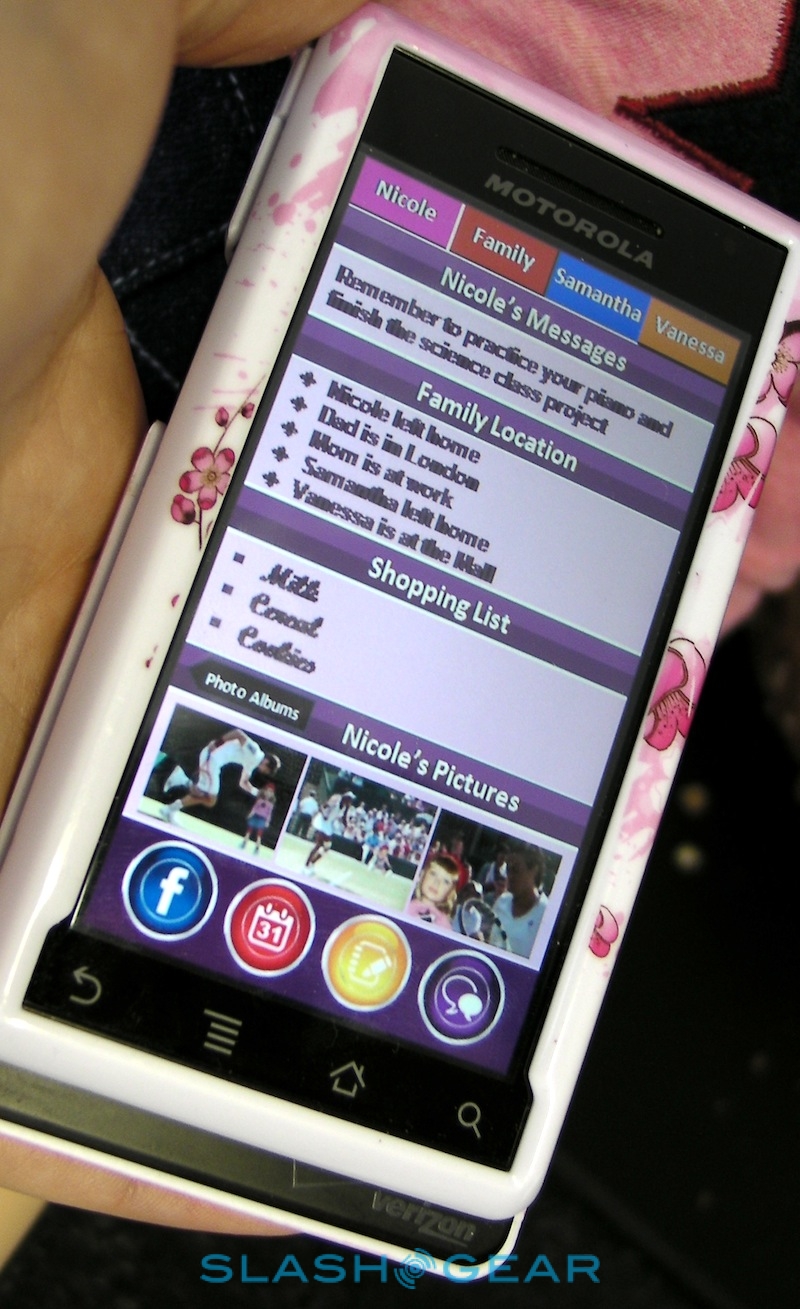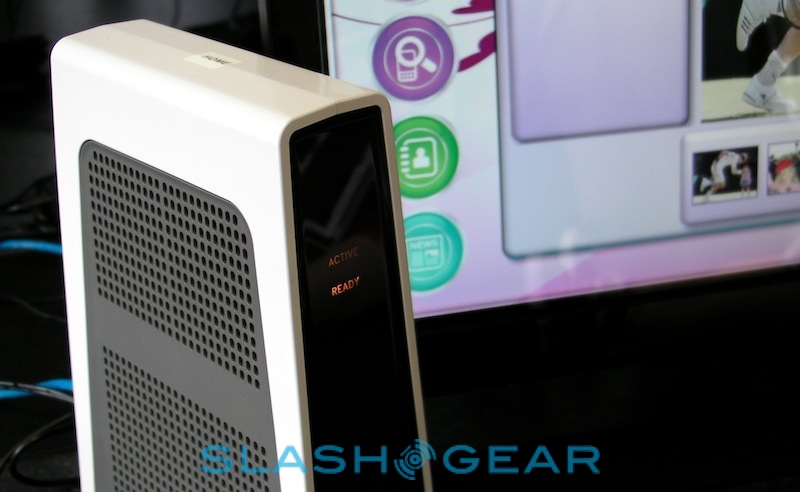Airvana Femto Family Tablet Hands-On
Femtocells: simple home cellular base stations that let you make a call when you're indoors and you can't persuade Verizon, AT&T or any of the other carriers to boost their coverage, right? Not if Airvana have their way; the company – who already supply carriers like Sprint with their Airave femto, and who are tipped to be readying a VoIP-capable model for the network – are hoping to turn personal base stations into connected home multimedia hubs, intelligently managing a family's communications and potentially shepherding in more touchscreen tablets. We caught up with the company to find out why smart femtos are the way forward.
A little background first: a femtocell is basically a domestic or small-office scale cellular base station, that hooks up to your broadband connection and creates a localized area of 2G or 3G coverage (depending on model). Your cellphone automatically pairs with the femto as if it were a regular base station – usually with some sort of pre-registration so as to prevent unauthorized access – and then any calls you make are passed over broadband to the carrier's network backbone rather than over the crowded airwaves.
Femtocells make sense for carriers as they allow them to shift heavy users off of wireless and onto the more capacious hard-wired network, and they make sense to users because they guarantee coverage in an area that perhaps doesn't normally see sufficient bars to make calls or use data services. Of course there's also a cost question on top of that – some operators charge upfront for the femto and then the ongoing service is free, while others subsidize the femto and then have a service fee and/or count calls against your wireless minutes – though that's up to the carrier rather than Airvana.
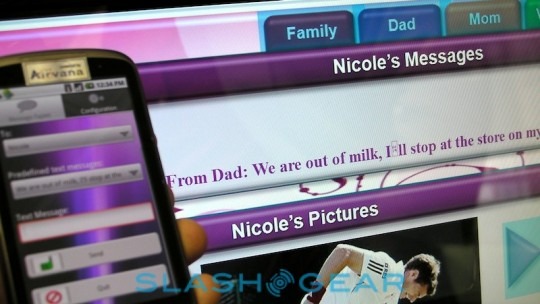
What makes the Airvana Femto Family Tablet – aka the Femt'Au Pair – special is its seamless integration with multiple devices, and the way it uses that integration. Airvana showed a demo where a cameraphone, when it came into range of the home femtocell, automatically transferred all its new photos to the home computer (in this case a touchscreen Sony VAIO all-in-one running a web-based "home hub" demo UI) and uploaded them to a Facebook gallery. The process was near-instantaneous, and at the same time the handset – a Motorola DROID – automatically changed its wallpaper to a "home" image and flashed up a message saying "Welcome Home". Since it took place over a cellular link (and at very fast speeds, since femtos are far more likely to reach the higher limits of HSDPA/HSUPA than a public base station) it didn't require WiFi be turned on or paired first.
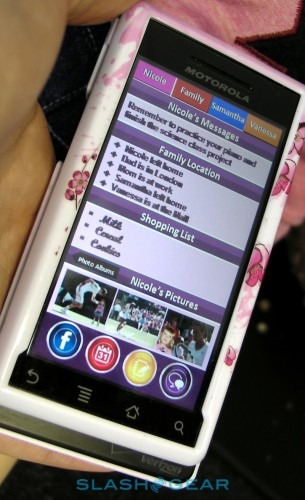
Meanwhile, messages left – either locally or sent through an automatically created VPN link when a handset is remote – from other home users flashed up on the VAIO's screen and on the mobile version of the app viewable on the DROID. In Airvana's demo, the DROID was set as a teenager's handset while a Nexus One was set as the parent's phone: as soon as the DROID came into femtocell range, an SMS was sent to the Nexus One saying the teenager was home. Meanwhile the parent could send messages – such as "do your piano practice" or "I'll be late" – to the teenager, flashing up on the VAIO and on the handset. A "Family Location" pane automatically updated to show where each person was, tracked by their phone and the base station they were connected to.
The clever part is that Airvana don't require complex modification of the mobile handset in order to use the basic functionality. The femtocell is capable of automatically collecting photos – you can also view them remotely, browsing the phone's memory as if it were locally attached via USB – together with pulling out calendar data without any specific software running. The calendar is intelligent enough to tell the difference between a physical location and a scheduled location, so for instance if the teenager leaves school and goes to the mall instead, that can be flagged up. Meanwhile, more complex femtocell-specific APIs have been developed that Airvana are pushing to have included into mobile handset OSes, that would allow for more significant interaction between the phone and the Family Tablet, for instance the changing wallpaper.
Those APIs – which Airvana will make publicly available, so carriers and developers alike can build applications or FAPapps ("Femtocell Access Point apps") for the system – are what makes the Femto Family Tablet really interesting. The company told us that the carriers they've spoken to have been keen on interoperability between different brands of femto and different carrier models, which hopefully means that a Verizon femto app won't be confused if wirelessly paired with a Sprint femto, for instance. It also leaves plenty of room for third-party developer involvement: Airvana haven't added image push functionality from the Family Tablet to the phone, for instance, but the service backbone is there and it would merely someone producing software for it.
Airvana envisage different versions of the system, and are in talks with various carriers who are leaning toward one or the other. The femto intelligence could be in a server integrated into the base station itself, serving up a local webpage for interaction in a similar way to the setup pages of most routers. Alternatively, a standalone box could be used – similar, perhaps, to Verizon's ill-fated Home Hub, only with a femtocell built in – that had a touchscreen for control. Finally, some carriers are talking about a remote, cloud-based interface that would see minimal intelligence in the local femtocell. As for what handsets the more complex features would be compatible with, Airvana already have an Android API and are working on versions for iOS, BlackBerry OS and other platforms at the moment. One interesting addition is virtual DLNA support, which basically allows non-DLNA compliant mobile phones to connect to – and send/receive content to/from – a DLNA source such as a media server or HDTV using the femto as a bridge.
The company won't be offering Femto Family Tablet hardware themselves; instead they're working with carriers with the femtocells and the underlying hub system. It'll be up to those network operators to decide what sort of box might appear in your living room, whether that will have its own touchscreen interface, use your PC or iPad, or even your HDTV. As for timescales, their estimate is sometime next year for Europe or North America; similar systems are already operating, though a little less complex, in Japan, where Airvana are working with KDDI among others. Carriers are likely to be spurred on by the research Airvana commissioned that found users would consider paying significantly higher monthly service fees and upfront hardware costs for systems that included home-hub style functionality; that, and the fact that the company just won awards for both the Femto Family Tablet and their contribution to femto standards. In fact the only people we can see not being too keen are teenagers: having your parents automatically updated whenever you arrive home or leave the house, or if you bunk off school, may prove to be a hard sell that even tight Facebook integration can't quite sweeten.

